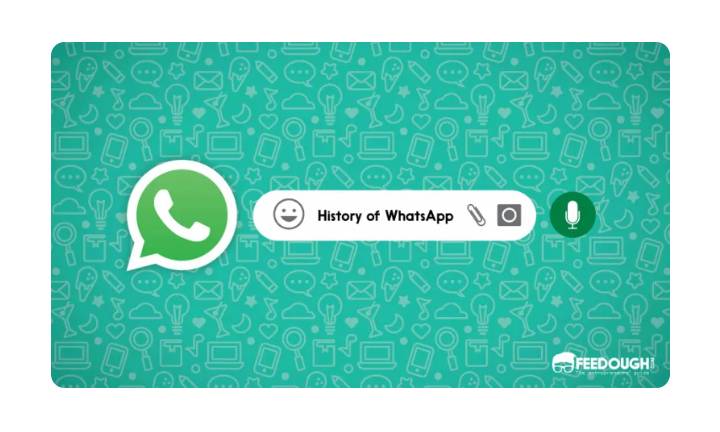No ads! No games! No gimmicks!” – A simple principle which helped a small messaging application win over giants like iMessage, WeChat, Facebook Messenger, Snapchat, LINE, Kik Messenger, Kakao-Talk, and many others – while operating with a staff of just 50 employees
Whatsapp’s history needs to be heard as it is not like any usual startup story where the founders had an idea that made them drop out from their colleges, build a team, and get pre-seed funding from a giant like Facebook or Google. WhatsApp was conceptualised not by college students but by people who were in their thirties and had a stable job with a renowned company.
The internet messaging application was conceptualised because of an actual need (democratising phone-based communications), and it succeeded because it was able to capitalise on almost every emerging trend like push notifications and need like encryption.
The best part?
Even after ten years of existence, the company still boasts its no ads, no games, and no gimmicks principle while making millions in revenue.
Here’s a brief history of WhatsApp explaining its conceptualisation, the initial WhatsApp business model, and the new WhatsApp business model after Facebook bought it.
Who Founded WhatsApp?
Brian Acton and Jan Koum
Source: Inc
Brian Acton and Jan Koum founded WhatsApp in 2009 after they left their job at Yahoo!.
The startup story began when they left their job to travel around the world. But soon, their savings started to sink, and they had to apply for a job on Facebook, which didn’t work out as planned as well. They were quite disappointed, but this failure led them to start a new life journey – WhatsApp.
Who Founded WhatsApp?
Brian Acton and Jan Koum
Source: Inc
Brian Acton and Jan Koum founded WhatsApp in 2009 after they left their job at Yahoo!.
The startup story began when they left their job to travel around the world. But soon, their savings started to sink, and they had to apply for a job on Facebook, which didn’t work out as planned as well. They were quite disappointed, but this failure led them to start a new life journey – WhatsApp.
WhatsApp 1.0 – Whatsapp Launches in 2009
Jan Koum bought an iPhone in January 2009 and soon realised the app industry’s potential on few months old App Store. He wanted to build an app that shows statuses next to the individual names of the users. Koum discussed the idea with Acton, and both started visiting Alex Fishman for more insights. But executing this idea was impossible without the help of an iOS developer. So, Alex introduced them to a Russian developer, Igor Solomennikov, whom he found on RentACoder.com.
The beginning of the journey was not a smooth one, but they paved their way through like many other successful entrepreneurs. Koum succeeded in developing the iOS application and incorporated the ‘WhatsApp inc.’ in California on 24th February 2009
He named it ‘WhatsApp’ because it sounded more like what’s up, which aligned with the idea of statuses.
He demoed WhatsApp to some friends, including Fisherman, but none of them liked it. Moreover, issues like battery draining, crashing of the app, etc. made Koum so disappointed that he lost all the hope and started to look for a new job. At that time, Acton encouraged by saying –
“You’d be an idiot to quit now. Give it a few more months.”
The Push Notifications Add-On
In June 2009, Apple launched the push notifications update. The motive behind this update was to remind the users when they are not using an installed application. Jan capitalised on this update and did some alterations to Whatsapp, which sent push notifications to friends whenever a user changed his status on the application.
Fishman’s Russian friends found it fun and started using it to update their own whereabouts and ping each of their friends with statuses like – “I woke late” or “Can’t talk, I’m at the gym”.
In no time, this feature became a channel for instant messaging, and users started chatting with each other through statuses like someone would post “What’s up, Karen?” and Karen would reply by changing her status.
Jan recognised this accidental opportunity at his town-house in Santa Clara and soon realised the need for upgrading the operating model of the status app to an internet-based instant messaging application. This is how version 2.0 came into existence.
“Being able to reach somebody halfway across the world instantly, on a device that is always with you, was powerful,” – Jan Koum


